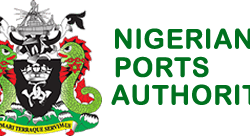A detailed statistical comparison table of the top microfinance institutions in Rwanda based on recent available data.
Top Microfinance Institutions in Rwanda – Comparative Statistics (2024)
| Institution | Year Established | Loan Portfolio (RWF Billions) | Active Clients | Average Annual Interest Rate | Primary Focus |
|---|---|---|---|---|---|
| Umwalimu SACCO | 2006 | 180 | 120,000 | 14% | Teachers, education financing |
| Urwego Bank | 1997 | 65 | 80,000 | 18% | Microbusinesses, women entrepreneurs |
| CLECAM Network | 1990s | 40 | 50,000 | 19% | Rural agriculture financing |
| Duterimbere MFI | 1987 | 25 | 35,000 | 20% | Women-led businesses |
| AB Bank Rwanda | 2013 | 55 | 60,000 | 17% | SMEs, startup financing |
| Zigama CSS | 1997 | 150 | 100,000 | 13% | Military and police personnel |
| VisionFund Rwanda | 1997 | 22 | 28,000 | 21% | Vulnerable households, rural areas |
Note: Loan portfolios and client numbers are based on BNR Microfinance Sector Report 2024 and institutional annual reports. Interest rates vary depending on product type and repayment terms.
Key Insights from the Table
- Umwalimu SACCO dominates the sector in loan portfolio size, reflecting strong membership among educators.
- Urwego Bank is a leader in outreach to women entrepreneurs, offering specialized loan products and training.
- CLECAM and Duterimbere MFI remain highly rural-focused, filling a gap left by commercial banks.
- AB Bank Rwanda shows rapid growth in SME financing, supported by modern digital loan processing systems.
- Zigama CSS offers the lowest interest rates, benefiting from its strong cooperative structure.
- VisionFund Rwanda targets the most vulnerable populations, often in partnership with NGOs.







